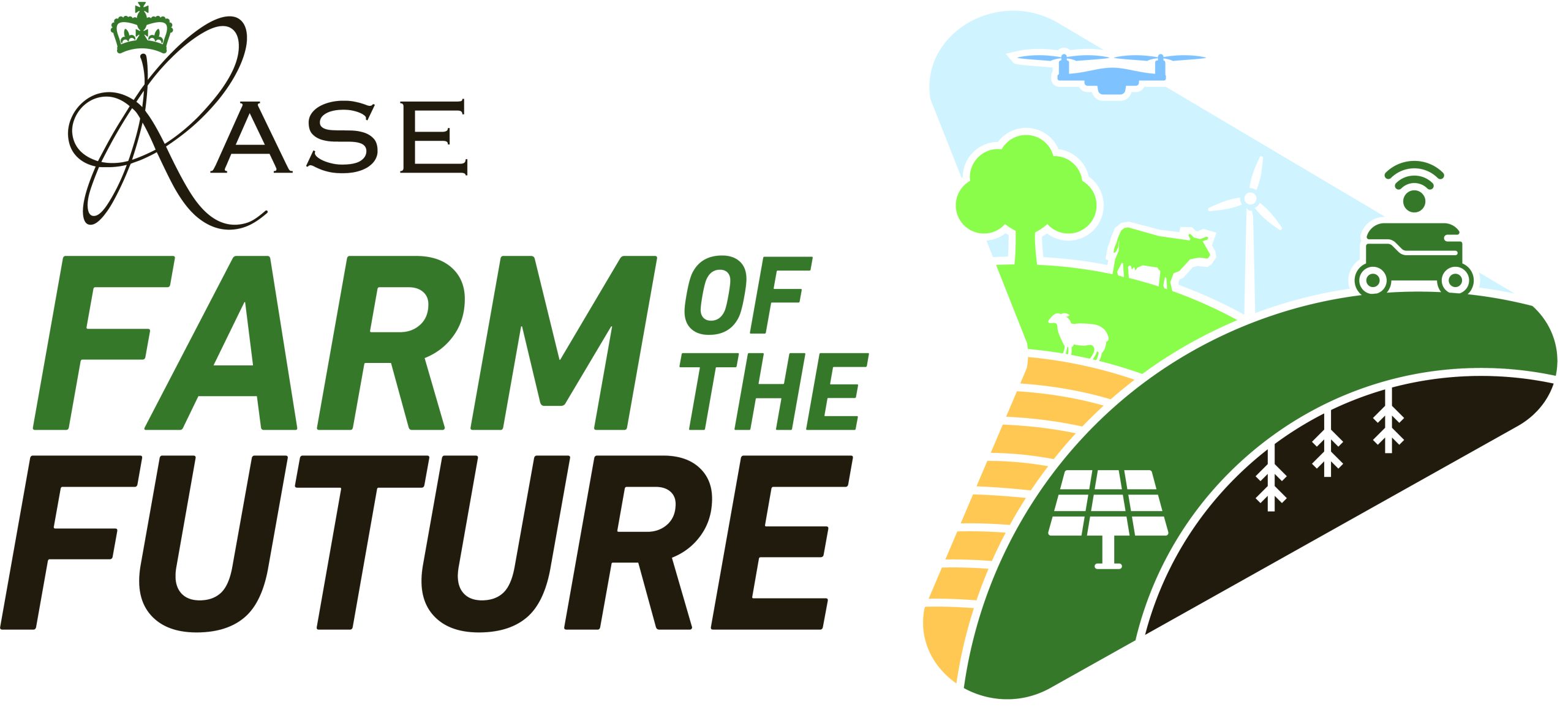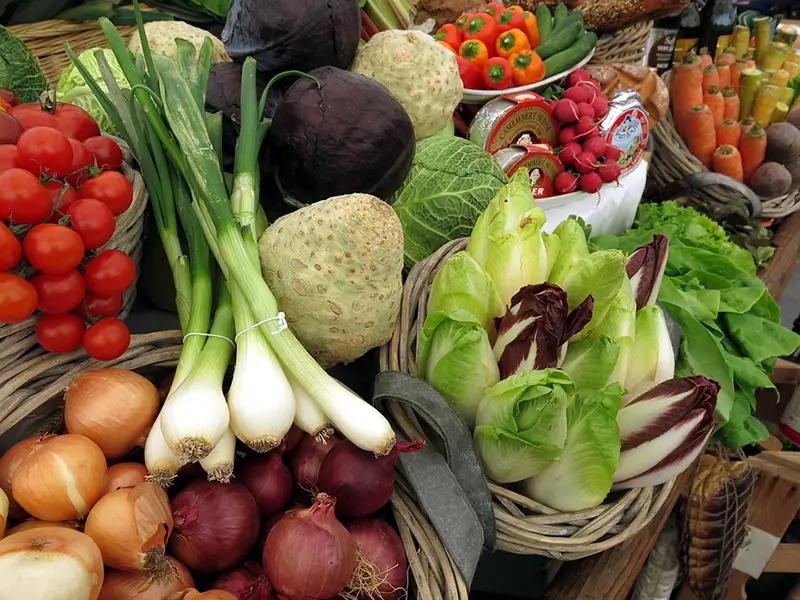Regenerative agriculture can restore soil fertility and increase the levels of organic matter in the soil remarkably fast, but how do regenerative farming practices impact the nutritional quality of food?
In a recent RASE Farm of the Future webinar we were joined by authors and researchers Anne Biklé and David Montgomery, deep ecologist Matthew Adams and farm manager David Miller, to explore how regenerative farming practices impact nutritional quality of food produced.
Read on to understand some of the evidence which demonstrates a link between farming practices and food quality, how the nutritional quality of food can be measured, and which nutrients and compounds are of particular interest when it comes to improving human health through diet.
Demonstrating a link between how food is produced and its nutritional quality
During the webinar, the speakers shared three examples of studies which have demonstrated a link between how food is grown and its nutritional quality.
- David Montgomery spoke about a study which he and Anne carried out, which took ten paired farms across the United States. These were pairs of neighbouring regenerative and conventional farms, with each pair having the same soil type and growing the same crops. The regenerative farms had all been practicing regenerative agriculture for between five and ten years.
The results showed that regenerative farms had on average twice as much soil organic matter and three times the soil health score – which was based on measurement of microbial activity – compared to their conventional neighbours. When the produce was tested, levels of phytochemicals such as carotenoids, phenolics and phytoserols were approximately 20% higher in the regeneratively produced crops. Vitamins K, C, E and B1 were also measured, and the regeneratively produced crops showed levels that were on average about 30% higher than their conventionally produced neighbours.
The study was a small sample size, but it does provide evidence that regenerative farming practices can enhance the nutritional quality of food.
- Also speaking in the webinar, Matthew Adams shared details of a project that his organisation, Growing Real Food for Nutrition (GRFFN) CIC, has been involved with in the Indian state of Andhra Pradesh. He explained that in Andhra Pradesh there are six million farmers, with approximately half a million farmers who are following principles of natural farming, which uses natural soil fertility building programmes, while the rest are using chemical agricultural approaches. GRFFN taught 30 community nutritionists how to do Brix testing, who then tested a whole range of crops that were grown either chemically or naturally farmed from plots adjacent to each other.
The results showed that naturally farmed foods had higher brix values compared to those where chemicals had been used, demonstrating that it is possible to measure the difference in quality of food produced using different methods.
The results showed that regenerative farms had on average twice as much soil organic matter and three times the soil health score – which was based on measurement of microbial activity – compared to their conventional neighbours. When the produce was tested, levels of phytochemicals such as carotenoids, phenolics and phytoserols were approximately 20% higher in the regeneratively produced crops. Vitamins K, C, E and B1 were also measured, and the regeneratively produced crops showed levels that were on average about 30% higher than their conventionally produced neighbours.
The study was a small sample size, but it does provide evidence that regenerative farming practices can enhance the nutritional quality of food.
- Also speaking in the webinar, Matthew Adams shared details of a project that his organisation, Growing Real Food for Nutrition (GRFFN) CIC, has been involved with in the Indian state of Andhra Pradesh. He explained that in Andhra Pradesh there are six million farmers, with approximately half a million farmers who are following principles of natural farming, which uses natural soil fertility building programmes, while the rest are using chemical agricultural approaches. GRFFN taught 30 community nutritionists how to do Brix testing, who then tested a whole range of crops that were grown either chemically or naturally farmed from plots adjacent to each other.
The results showed that naturally farmed foods had higher brix values compared to those where chemicals had been used, demonstrating that it is possible to measure the difference in quality of food produced using different methods.
- Matthew also spoke about another study, which took place from 2004 to 2011, and demonstrated the importance of soil biology over soil chemistry. In this study, 23 nutrients and micronutrients were measured in potatoes each year. The results showed a loss of minerals over time, which dropped from roughly 50,000 ml per kg to 20,000 ml per kg at the end of the study. The soil pH stayed the same throughout the study, as did the fertiliser index, so the chemistry did not change. But when they measured the fungi and bacteria in the soil, they found it was the biology that was depleted, and likely causing the reduction of nutrient quality in the potatoes.
Measurement of nutrient quality
One key point that came from the webinar was that nutrient density is not actually defined, and how to measure nutrient density remains an open question.
Brix testing provides a crude measure of carbohydrate production plus everything else which is dissolved in water, which includes the nutritional content. Speaking in the webinar, Matthew suggested that results can be verified by engaging with human senses, particularly taste. He spoke about another project, in which they carried out blind taste testing sessions and found that the foods with the highest Brix test score were also voted to have the best taste.
A biological perspective
In the webinar, Anne Bikle spoke about how plants acquire nutrients in biologically active soils. She spoke about the microbial activity that goes on in the rhizosphere – the area around a plant’s root hair – which she refers to as the ‘biological bazaar’.
She shared that microbes – such as bacteria, viruses and fungi – do transformative work when it comes to acquiring and processing nutrients for their host organism.
Plants release compounds called exudates, which are mixtures of fats, sugars, proteins and phytochemicals. Bacteria consume the exudates, then turn them either directly or indirectly into other compounds which they return to the plants. These include plant growth promoting hormones, nutrients like nitrogen, micronutrients and microbial metabolites.
In addition, mycorrhizal fungi coat every root hair in a healthy soil, with some types even living inside plant cells, where they are exchange things they have collected from distant areas of the soil with their plant host. One of the most important nutrients exchanged by mycorrhizal fungi is phosphorus, which plants need for growth.
The microbiome plays a big role in acquiring nutrients and in supporting plant health and defense. Anne also spoke about the ‘fab four’, which are four groups of compounds which humans can only acquire from diet, as they cannot be made in the human body. Many of these compounds are critical to disease prevention, including chronic disease as well as infectious disease. The ‘fab four’ are:
- Micronutrients – nutrients like selenium, iron and copper, which are only needed in very small amounts but do important things in our bodies
- Phytochemicals – a vast array of compounds that plants are able to produce to carry out specific tasks, for example to defend the plant
- Fat balance – relates to the fat profile of animals and consuming the right balance of omega 3s vs omega 6s
- Microbial metabolites – compounds released from the microbiome
Anne shared that many of the tasks carried out by phytochemicals in plants, like protection, defense and communication, they also do in human bodies, which is why it is important to have them in the human diet. She shared that phytochemicals are frequently embedded in plant fibre, so eating fibre which is then broken down by a human’s own microbiome in the large intestine is the best way to get phytochemicals into the human body.
What next?
After sharing details of the regenerative practices used at Wheatsheaf Farming, David Miller raised the point that from a political perspective, cheap food is a real plus, despite the fact people in the UK now spend only 16% of income on food, whereas 60 years ago this figure was 33%. He also shared that 95% of food consumed in the UK is sold by 12 major retailers, from which 50% of the food purchased is ultra processed.
From a practical perspective, David asked what he can do as a farmer to measure nutritional quality, as well as what the industry can do to promote the benefits of nutritious food to the public.
It’s clear that there is still a lot for both researchers and the farming industry to find out about how regenerative farming practices impact nutritional quality of food. Through nutrition, food and farming is linked with medicine and human health, but how do we join the dots to enable farmers to produce food that is as nutritious as possible and encourage the public to choose it over ultra-processed alternatives?
Find out more by watching the full webinar in the members’ resources section of the website. Not a member? Find out how to join the RASE community today.

